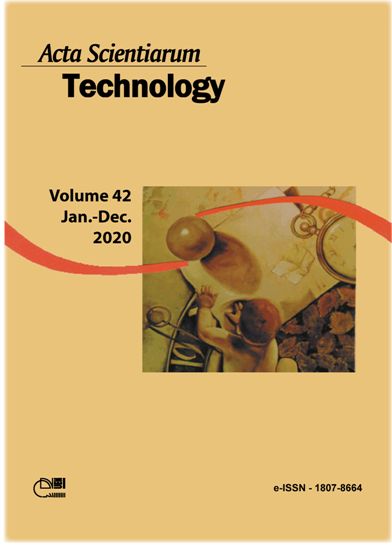Bayesian approach to the zinc extraction curve of soil with sewage sludge
DOI:
https://doi.org/10.4025/actascitechnol.v42i1.46893Palavras-chave:
micronutrient; nonlinear model; Bayesian inference.Resumo
Zinc uptake is essential for crop development; thus, knowledge about soil zinc availability is fundamental for fertilization in periods of higher crop demand. A nonlinear first-order kinetic model has been employed to evaluate zinc availability. Studies usually employ few observations; however, inference in nonlinear models is only valid for sufficiently large samples. An alternative is the Bayesian method, where inferences are made in terms of probability, which is effective even with small samples. The aim of this study was to use Bayesian methodology to evaluate the fitness of a nonlinear first-order kinetic model to describe zinc extraction from soil with sewage sludge using seven different extraction solutions. The analysed data were obtained from an experiment using a completely randomized design and three replicates. Fifteen zinc extractions were evaluated for each extraction solution. Posterior distributions of a study that evaluated the nonlinear first-order kinetic model were used as prior distributions in the present study. Using the full conditionals, samples of posterior marginal distributions were generated using the Gibbs sampler and Metropolis-Hastings algorithms and implemented in R. The Bayesian method allowed the use of posterior distributions of another study that evaluated the model used as prior distributions for parameters in the present study. The posterior full conditional distributions for the parameters were normal distributions and gamma distributions, respectively. The Bayesian method was efficient for the study of the first-order kinetic model to describe zinc extraction from soil with sewage sludge using seven extraction solutions.
Downloads
Downloads
Publicado
Como Citar
Edição
Seção
Licença
DECLARAÇíO DE ORIGINALIDADE E DIREITOS AUTORAIS
Declaro que o presente artigo é original, não tendo sido submetido í publicação em qualquer outro periódico nacional ou internacional, quer seja em parte ou em sua totalidade.
Os direitos autorais pertencem exclusivamente aos autores. Os direitos de licenciamento utilizados pelo periódico é a licença Creative Commons Attribution 4.0 (CC BY 4.0): são permitidos o compartilhamento (cópia e distribuição do material em qualqer meio ou formato) e adaptação (remix, transformação e criação de material a partir do conteúdo assim licenciado para quaisquer fins, inclusive comerciais.
Recomenda-se a leitura desse link para maiores informações sobre o tema: fornecimento de créditos e referências de forma correta, entre outros detalhes cruciais para uso adequado do material licenciado.



















